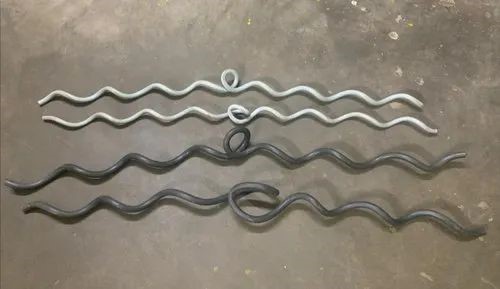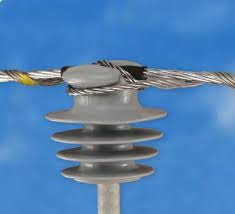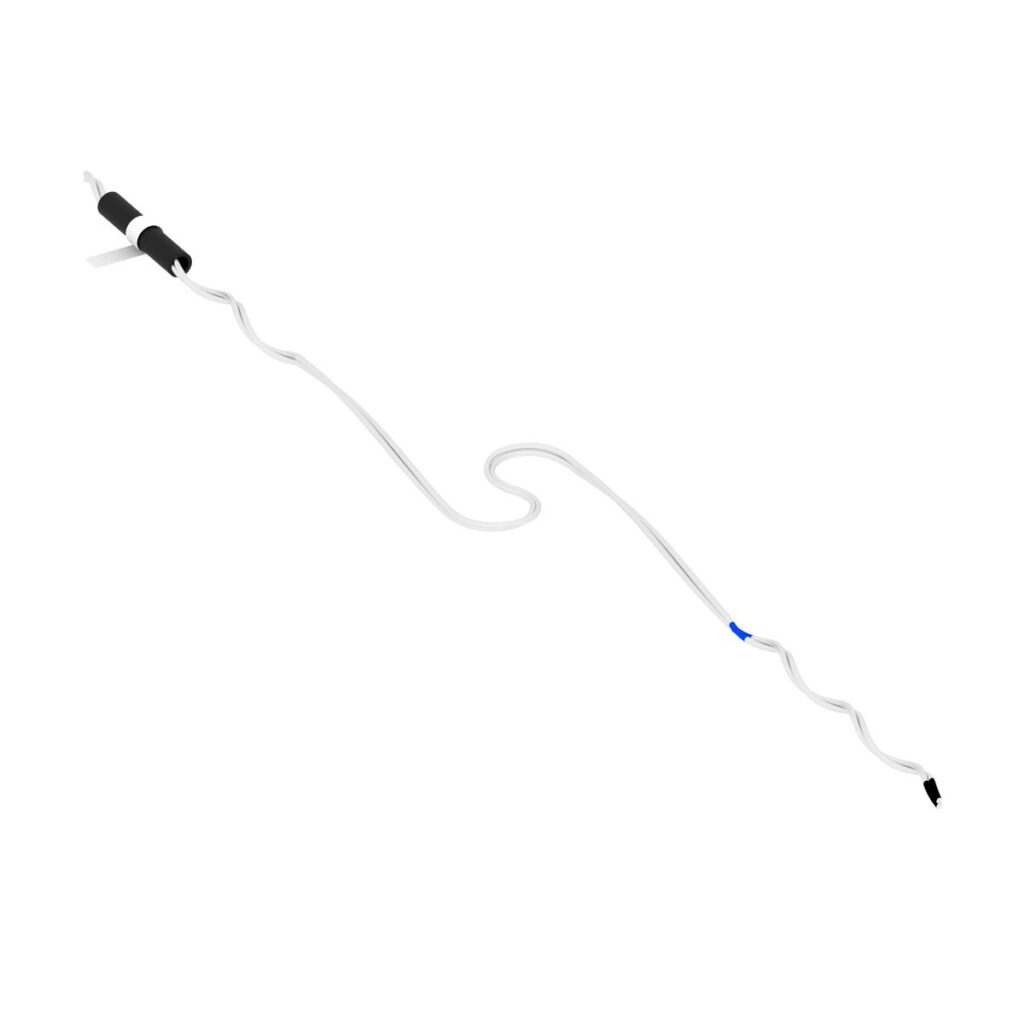A top tie is a hardware designed to secure and support conductors in overhead transmission lines. It is also used to secure ADSS and OPGW cables to support structures like utility poles or towers. A top tie for ADSS/OPGW cables has designs to hold the cable in place while reducing stress and potential damage to the cable. These top ties have a helical design that allows them to wrap around the cable and the support structure. The ties must be able to handle both the mechanical load and the electrical grounding requirements. Top ties ensure a reliable connection that can withstand various environmental conditions. They are from high strength and durable materials that ensure their long term performance.
Materials used in the construction of a top tie for ADSS/OPGW cables
Top ties for ADSS/OPGW cables are from materials selected for their mechanical strength, durability and compatibility. Selection of the material depends on the specific requirements of the environment conditions. Right top tie selection provides reliability and long lasting support for ADSS and OPGW cables. The following are the materials used in the construction of top ties.

- Aluminum clad steel – this combines the strength of steel with the corrosion resistance of aluminum. It provides a strong and durable solution that can withstand harsh environmental conditions.
- Galvanized steel – this is steel coated with a layer of zinc to prevent corrosion. They work in environments where high mechanical strength is necessary.
- Aluminum alloy – this is lightweight, corrosion resistant and robust. It is suitable for ADSS cables in areas with high corrosion potential.
- Fiberglass reinforced polymer – this is a non-conductive, lightweight and corrosion resistant material. These top ties are ideal for ADSS/OPGW cables in high voltage environments. They help to reduce electrical conductivity of the support structure.
- Thermoplastic materials – this is a non-conductive material that is resistant to UV radiation and weathering. It also provides a non-metallic option that is easy to handle and install.
- Stainless steel – this is resistant to corrosion and provides excellent mechanical strength. It works in areas with high exposure to corrosive elements.
Conductors compatible with a top tie
Top ties serve to secure several types of conductors to support structures in overhead transmission lines. Conductors that work with top ties for ADSS/OPGW cables have specific characteristics that make them unique. This is to ensure compatibility and effectiveness of the application system. The following are the conductors used with top ties and their characteristics.

- ADSS cables – these are non-metallic components that make them immune to electromagnetic interference. They are able to withstand various environmental conditions. Thisis including UV radiation, temperature changes and precipitation.
- OPGW cables – these cables combine optical fibers for communication with metallic conductors for grounding and protection. The metallic components ease grounding and protect the cable and the infrastructure.
- Aluminum conductor steel reinforced (ACSR) – these conductors feature a steel core for strength and aluminum strands for conductivity. The steel core provides mechanical strength for long spans between structures.
- Aluminum conductor alloy reinforced (ACAR) – these conductors consist of aluminum alloy strands. They provide a balance between strength and conductivity. They are easier to handle and install compared to ACSR.
- Aluminum alloy conductors (AAC) – this conductor is from aluminum alloy which provides uniform properties. They provide excellent electrical conductivity with goof mechanical strength.
Top ties for ADSS and OPGW cables
Top ties secure ADSS and OPGW cables to their support structures in overhead and telecommunication systems. The top ties must have specific characteristics to ensure they provide effective support. This is while maintaining the integrity and performance of the cables. Additionally, top ties must be compatible with cable diameter, provide a secure grip and ease maintenance. The following are the characteristics of top ties used for ADSS/OPGW cables.

- Non-conductive material – the top ties should be from dielectric materials to prevent electrical interference. It should also ensure compatibility with the all-dielectric nature of ADSS cables.
- Helical design – this is the spiral shape that wraps around the cable. This helps to distribute pressure along the length of the cable to reduce the risk of localized stress.
- UV and weather resistance – the top ties should be resistant to UV radiation, moisture, temperatures and other factors. This is to ensure durability and reliability for ADSS cables in outdoor installations.
- High tensile strength – the ties should be able to withstand the mechanical loads from the cable and environmental factors. This helps to provide secure support and reduce sagging over long spans.
- Corrosion resistant materials – top ties for OPGW cables should be from corrosion resistant materials to ensure durability.
- Mechanical strength – the ties should have high tensile strength to handle the combined weight of the cable and other loads. This helps to provide a strong support for the cable and prevent excessive sag.
- Electrical conductivity – the top ties for OPGW cables should be suitable for grounding and bonding with the metallic components of the cable. This is to ensure proper grounding and enhance safety and performance.
- Ease of installation – the top ties should have designs that allow quick installation without need for special tools. This is to reduce labor costs and installation time to ensure a secure fit.
Cost comparisons and considerations for top ties
There are different types, designs and suppliers for top ties in the market with different price ranges. There are several factors that influence the cost of top ties. Also, it is advisable to balance the initial costs for top ties with their long term benefits and performance. Ask for quotations from different suppliers to compare prices before selecting the top ties. The following are the factors that influence the prices for top ties.

- Material costs – there are different materials used in the construction of top ties. Check their performance, durability and costs. Aluminum-clad steel is more expensive due to its strength and corrosion resistance. High-quality materials last longer and perform better under harsh conditions.
- Design and engineering – top ties with helical or spiral designs may cost more than standard designs. This is due to the precision required during manufacture. Custom-designed top ties for specific cable diameters cost more compared to standard designs.
- Installation costs – top ties with quick installation designs reduce labor costs with no need for special tools.
- Environmental conditions – investing in corrosion-resistant materials like stainless steel can be cost-effective. Top ties exposed to extreme weather conditions need to be from materials and designs that can withstand the stresses.
- Volume and bulk purchasing – purchasing top ties in bulk can reduce the costs per unit and potential discounts for large orders.
- Supplier and brand – established brands and reputable suppliers might charge a premium for their products. Extended warranties and robust customer support might have higher upfront costs. They may offer savings through reduced maintenance expenses.
- Regulatory and compliance costs – ensuring that top ties meet standards and certifications influences their costs. Compliant products have higher manufacturing standards and related costs.
- Total cost of ownership – consider the upfront costs, installation costs, maintenance, replacements and any other operational disruptions.
Supplier information for top ties
There are several suppliers and manufacturers for top ties in the market to select from. The right selection ensures the best quality, reliability and value for the top tie. Additionally, it is important to select a supplier that meets your immediate needs and the long term success of your cable installations. The following are the factors to consider when selecting the suppliers for top ties.

- Quality and compliance – verify that the supplier uses high-quality materials suitable for the intended application. Check for suppliers who conduct rigorous testing and quality control processes.
- Supplier reputation – consider suppliers with a proven track record and extensive experience in manufacturing the top tie. Check for references from other customers and read reviews to gauge their reputation.
- Technical support and service – check the level of technical support provided by the supplier. This is including help with product selection, installation guidance and troubleshooting.
- Customization and flexibility – assess the suppliers range of products for top tie that meet your specific needs. Select suppliers that can handle both small and large orders. They should also offer flexibility in schedules and order adjustments.
- Cost and value – compare pricing from various suppliers to ensure competitive rates. Consider the long term costs including installation, maintenance and potential replacements.
- Logistics and delivery – check the suppliers lead times and their ability to meet project’s timelines. Consider the geographical reach and delivery network.
- Financial stability – assess the financial stability of the supplier to ensure they continue to support your needs.
- Innovation and technology – check for suppliers who invest in research and development to provide innovative solutions. Consider the suppliers who use advanced manufacturing technologies to ensure high quality products.
Frequently asked questions
Top ties are hardware components used to secure ADSS and OPGW cables to support structures. Their main function is to hold the cables in place and reduce stress and potential damage.
Top ties for ADSS cables are non-conductive, have helical designs, UV resistant, high tensile strength and provide easy installation.
The helical design of top ties distributes pressure evenly, provide secure attachment and reduces installation stress.

